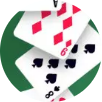Exotics live in the city
Chamois on the Plabutsch, seagulls on the Graz clock tower!
It is well known that thousands of dogs and cats live in the big city. But there are also exotic species such as wild boar, goosanders and chamois.
"If Graz only consisted of the main square and Jakominiplatz, the situation with wild animals would be different," says Johannes Gepp, President of the Styrian Nature Conservation Association, matter-of-factly. "But a quarter of the Styrian capital is covered by forest. And the Schloßberg and those homeowners who have biotopes and colorful hedges in their gardens contribute a lot to biodiversity." After all, it's amazing to see all the flora and fauna in the city.
Let's start small. Gepp: "There are thousands of butterfly species recorded. On the Hauenstein alone, there is a meadow from the Nature Conservation Association which, after 30 years of effort and research, has 840 different species." Extreme rarities such as the Easter lily butterfly or the Japanese silk moth, which is one of the giants with a wingspan of 15 centimetres, fly in Graz. Even the Viennese peacock moth, which had become extinct, has now been reintroduced thanks to the efforts of the Nature Conservation Association!
One of the extreme rarities is the greater horseshoe bat, a bat species that only has young in the attic of Schloss Eggenberg throughout Austria! A sensation.
The breeding, hatching and fledging of the young here even became a "TV hit" with a high viewing rate: a pair of peregrine falcons nested in the tower of the Herz-Jesu-Kirche, observed by the live camera.
The Huchen can also still be found in the Mur River in Graz - which may have contributed to the fact that a pair of seagulls has also found a home here! Seagulls above the Graz clock tower - you don't see that every day.
Chamois - they can usually be seen high up. Or on the Plabutsch. Because two populations live here, around 70 animals! "We even have wild boar from time to time," says district master hunter Stephan Bertuch. Up to three are shot every year. However, the hunting situation in the state capital is very special: "A shot can only be fired if it is safe and there is a bullet trap. But where joggers or walkers are out and about, you have to be even more careful."
However, while some districts in Graz are highly sought after for hunting, in others there is only fallen game, i.e. game killed by road traffic or poaching dogs. .
The office of City Councillor Claudia Schönbacher knows what else there is in Graz. Namely: even badgers, the occasional nutrias, pheasants, martens, hares (at the central cemetery, for example), foxes and lizards.
And, Gepp adds: Praying mantises! They're mainly on the Platte. As well as the wallpaper spider on the Schloßberg - a relative of the tarantula, by the way.
This article has been automatically translated,
read the original article here.



Kommentare
Liebe Leserin, lieber Leser,
die Kommentarfunktion steht Ihnen ab 6 Uhr wieder wie gewohnt zur Verfügung.
Mit freundlichen Grüßen
das krone.at-Team
User-Beiträge geben nicht notwendigerweise die Meinung des Betreibers/der Redaktion bzw. von Krone Multimedia (KMM) wieder. In diesem Sinne distanziert sich die Redaktion/der Betreiber von den Inhalten in diesem Diskussionsforum. KMM behält sich insbesondere vor, gegen geltendes Recht verstoßende, den guten Sitten oder der Netiquette widersprechende bzw. dem Ansehen von KMM zuwiderlaufende Beiträge zu löschen, diesbezüglichen Schadenersatz gegenüber dem betreffenden User geltend zu machen, die Nutzer-Daten zu Zwecken der Rechtsverfolgung zu verwenden und strafrechtlich relevante Beiträge zur Anzeige zu bringen (siehe auch AGB). Hier können Sie das Community-Team via unserer Melde- und Abhilfestelle kontaktieren.









